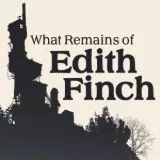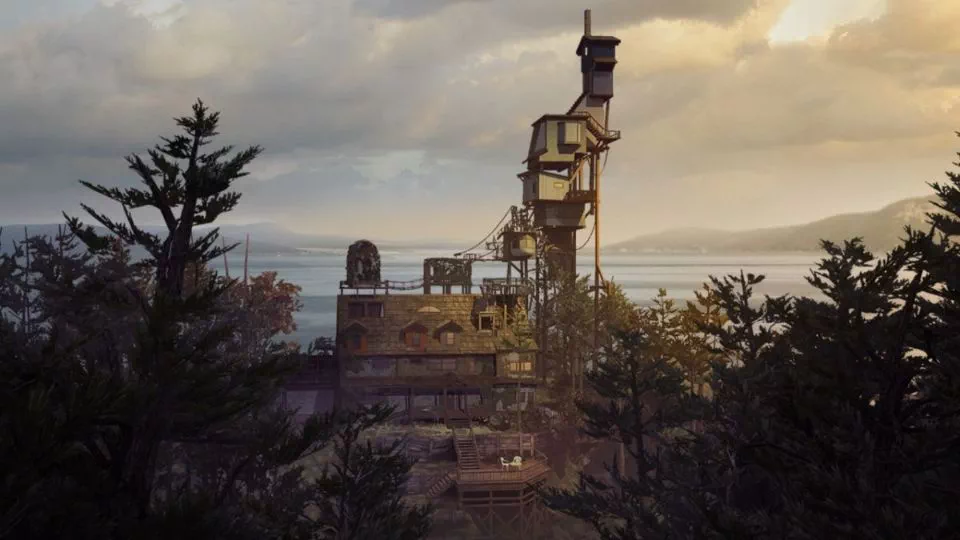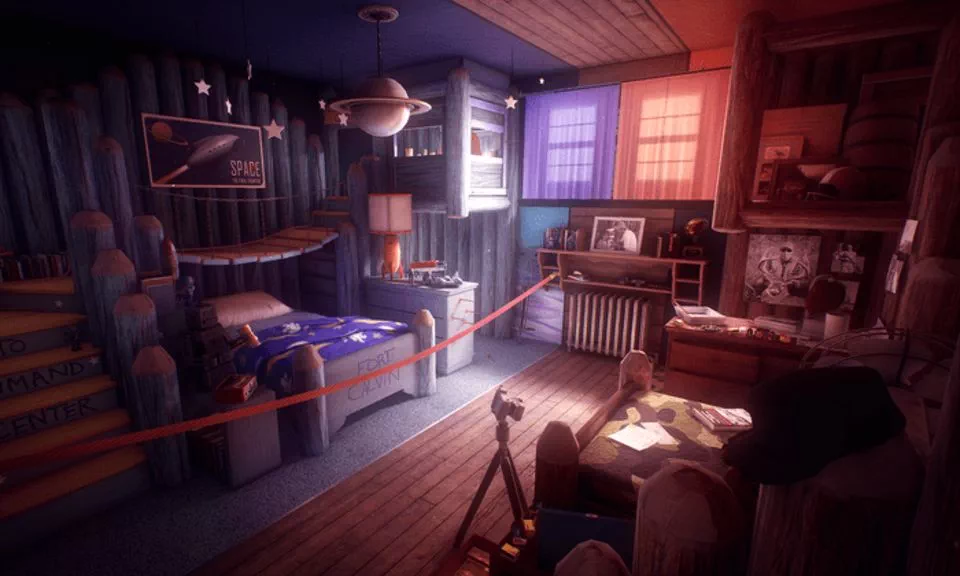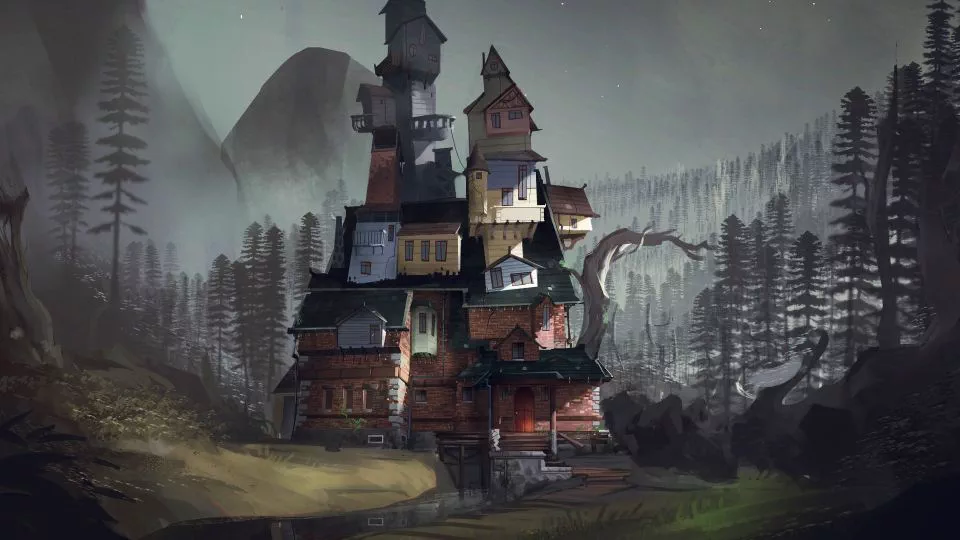Man of Medan - PS4 - Game...
From Supermassive Games, the creators of one...
By Adonis Monahan2187

0

A seemingly mundane walking-simulator, What Remains of Edith Finch opens with a view of a pristine sea from a rocking boat. The first-person character lowers his gaze from the crashing waves to his lap, where the cover of a tattered journal reads Edith Finch. As the first-person character flips the journal to the first page, it reads:
“A lot of this isn’t going to make sense to you, and I’m sorry about that. I’m just going to start at the beginning.
With the house.”
The eponymous game shifts to Edith’s perspective, marking the beginning of the story-driven journey to explore the abandoned house of the Finches, after seven years of the protagonist’s hiatus.
This Mystery titular game, although brief, is not for the faint-hearted. Edith is the last woman standing in the Finch family tree, allowing players to explore the family curse that led to every member’s demise – all through the eyes of Edith.
While the game is reminiscent of Firewatch and Dear Esther, the tedium of the gameplay is quickly overpowered by the impressive environmental detail that compels players to momentarily pause, and look at the minutiae inside the Finch home.
Books piling up at every corner give players the impression that the Finches were voracious readers who were passionate about stories, while the frustration of running into sealed bedroom doors dissipates as players find their ways through secret passages and tunnels.
“As a kid I just assumed every house had peepholes and sealed rooms you weren't allowed inside of,” Edith narrates as she takes a peek through the peephole on Calvin Finch’s bedroom door.
While grief and abject sense of loss are not easy emotions to portray, Giant Sparrow gives players a detailed depiction of every Finch’s character through a brief first-person driven story inside their bedrooms, revealing their mysterious demise. The player is left with a sense of catharsis, and is compelled to stop for a moment to process every death in the family tree.
Much like the appearance of the Finch home, the messy mishmash of interwoven stories start to make sense as Edith progresses on her journey to find an answer. The banality of opening doors and crouching through tight crevices begin to feel natural and less limiting.
The gameplay controls seem to take a brief turn, as players explore the death of Molly Finch, who supposedly dies of food poisoning after feeding on various inedible objects in her bedroom to satiate her late-night hunger.
Although the deaths in the family are plausible, their stories are explored through fantastical mini games. Molly’s hallucinations allow us to chase a bird after she morphs into a cat to fill her insatiable hunger.
The story carries on as she transforms into bigger animals, and the journey ends when she turns into a slithering reptile that eventually lurks under her bed, before the perspective is shifted to Molly in her human form once again.
On her bed, she composes her last words for Edith to read, “I think it's waiting for me to fall asleep. But it's not going to wait much longer. It needs to feed. And we both know... I will be... delicious,” Molly’s chilling last words read before Edith closes the little girl’s journal.
The unfortunate deaths of the Finches continue to be told in bizarre metaphors, each seemingly occurring out-of-the-blue, yet predictably so under the influence of the mysterious family curse.
Granted, despite the beautiful stories and impressive detail, the gaming controls can be a little frustrating. There are few settings for the player to fiddle with, while crouching and climbing controls are not adjustable. However, they happen automatically when necessary, seeing as the game is primarily a walking simulator.
On PC, the mouse navigation can be deterring, with the maximum sensitivity still slower than your average game. These limiting controls become obvious in some of the stories more than others.
Flying Gus Finch’s kite, and pushing Calvin Finch on his swing are instances when the gameplay controls can show their faults; however, the compelling stories are not very mechanically-driven, and the mystery of the game leaves players so immersed that these flaws are not very prominent.
 https://revyou.com/uploads/thumbnail-960/15930420945521799.webp
what remains of edith finch - Game Review
https://revyou.com/uploads/thumbnail-960/15930420945521799.webp
what remains of edith finch - Game Review https://revyou.com/uploads/thumbnail-960/1593042094554UwN8ovD3UUXNR338HfUith.webp
what remains of edith finch - Game Review
https://revyou.com/uploads/thumbnail-960/1593042094554UwN8ovD3UUXNR338HfUith.webp
what remains of edith finch - Game Review
One common ground that ties all of the Finches’ stories together is how reality slowly dwindles into an imaginary alternate world, uniquely depicting how a given character has perceived life. While this gives the plot a deeper sense of mystery, it also gives players the space to interpret the happenings of the story through their own lens. Some players have argued that Edith’s brother, Lewis Finch, has managed to somehow find a way around the curse.
In his salmon cannery workstation, Lewis monotonously beheads one lifeless fish after the other. And what makes his story stand out from the rest is how he doesn’t tell it himself, neither through his own words, nor through a glimpse of one of his creations.
Edith finds a letter written by his psychiatrist, who claims that Lewis let “his mind wander,” as his psychosis gradually took over his consciousness. We walk through Milton’s thoughts as his alternate self, King Milton, who lives in Lewistopia.
The strong implications that Lewis has eventually beheaded himself in an automated guillotine drive many to presume that he met has met his demise, while the marijuana paraphernalia in his tree house would insinuate that he was a Finch with unconventional beliefs in the 1990s, and had somehow found an escape, and perhaps faked his death.
What Remains of Edith personifies the joy of reading childhood books in a touching story that eventually reveals the demise of its own protagonist. All the puzzles fall into place after the last story is told through Edith’s journal to a mysterious character, who is unveiled shortly before the credits run.
This story-driven journey takes players through ups and downs in a cathartic roller coaster, with each family member somehow portraying a part in all of us. The cliffhanger ending leaves an open portal of possibilities and a dozen questions. And while the threads of the mystery remain unsolved, the story somehow convinces you that it doesn’t have to be.
Updated 4 years ago